This post may contain affiliate links. Please read our disclosure policy. As an Amazon Associate, I earn from qualifying purchases.
Prime Rib Roast! This is a tender, juicy and flavorful main course cut of beef that is reserved for special events and holidays. It can be a budget-buster and not a ‘spur-of-the-moment’ purchase but it is easy to prepare, wonderfully delicious and well worth the expense.
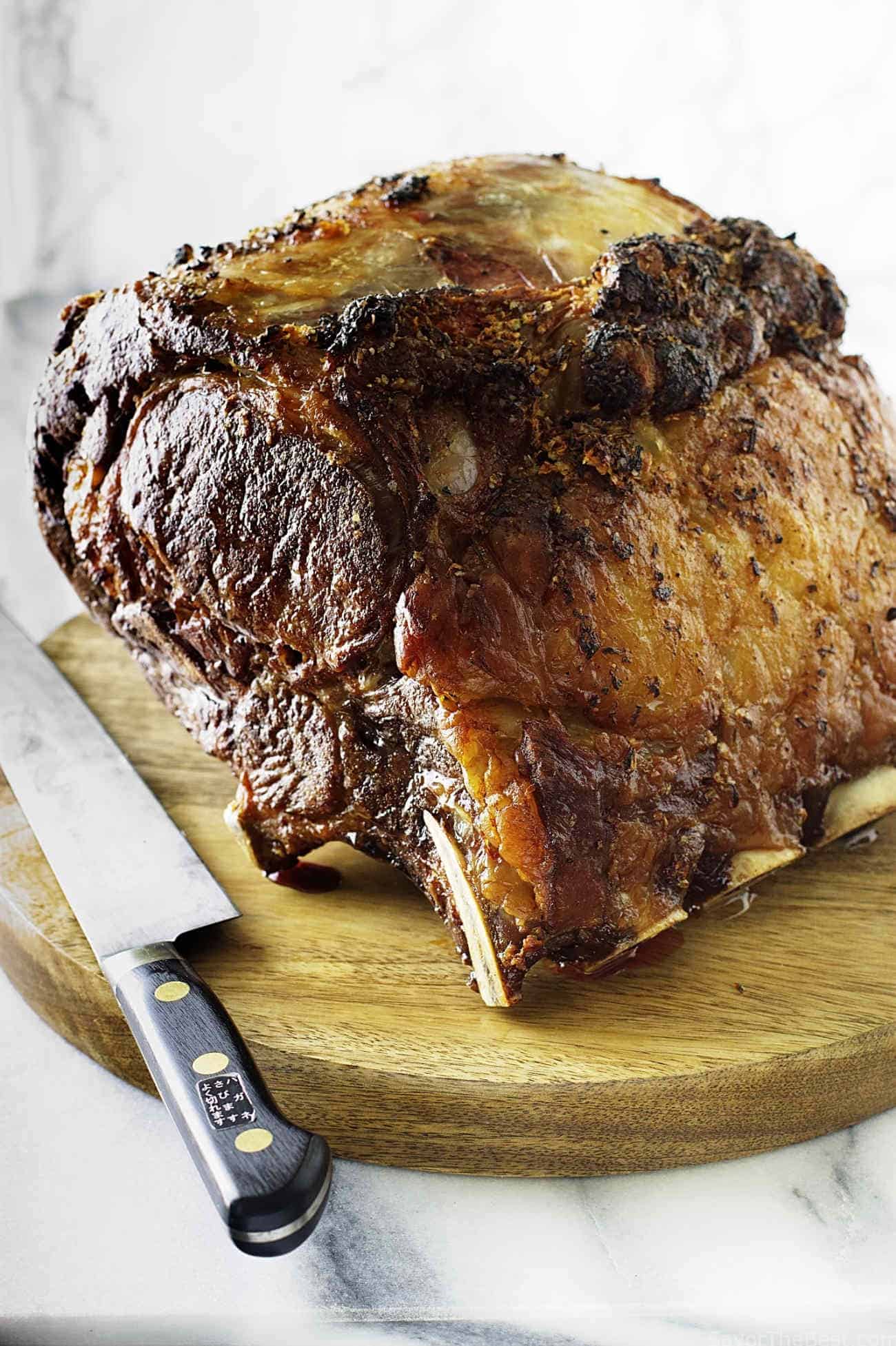
It is a tradition at our house to have a standing prime rib roast beef for Christmas dinner. At Thanksgiving it is all about the turkey and the trimmings; but at Christmas dinner the big, flavorful prime rib roast beef is the star of the show.
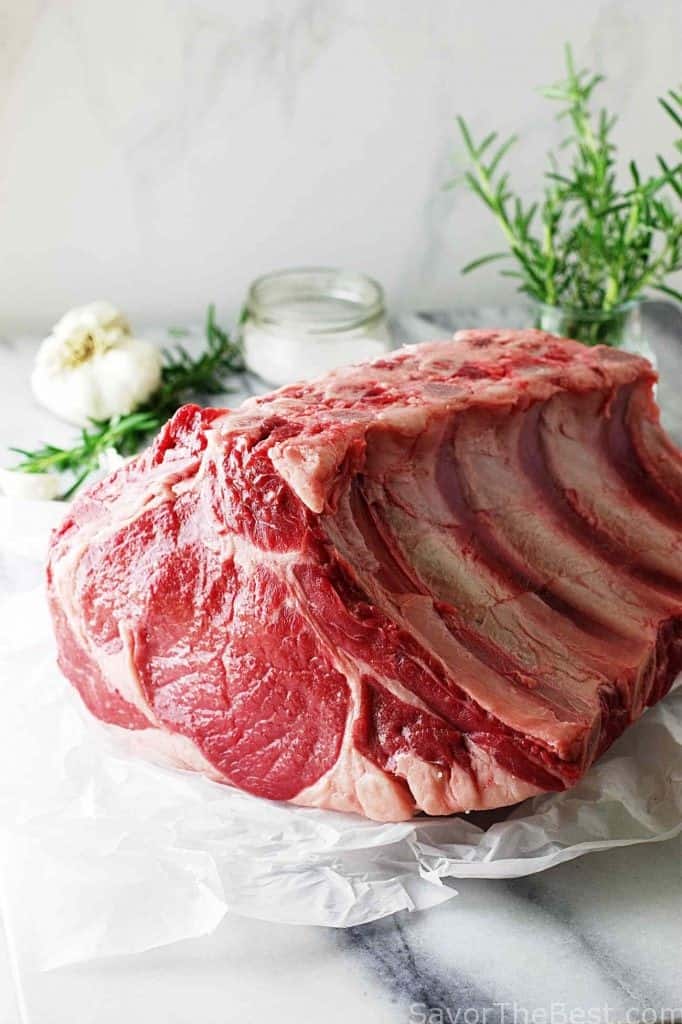
Tips For a Great-Tasting Prime Rib Roast:
This recipe has been adapted from the 2013 Cook’s Illustrated Holiday magazine and has a couple techniques that I used in preparing this year’s bounty of prime rib roast.
- Salt the beef and let it sit in the refrigerator for several days.
- Cook the roast at 200°F until it reaches the desired temperature.
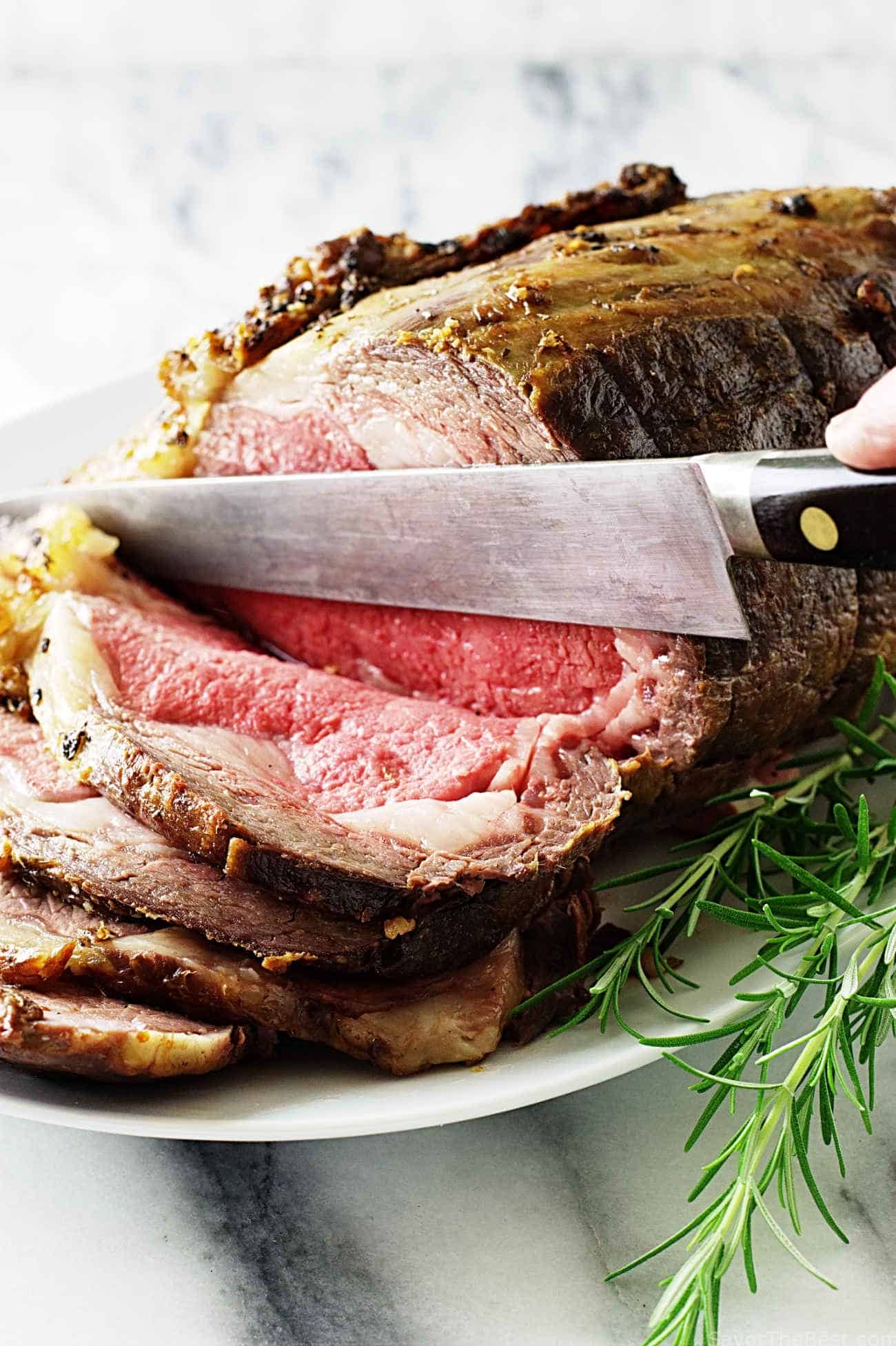
I will admit to having just a little anxiety about departing from my regular recipe as this is an investment of a 9-pound roast and I surely did not want to ruin it; but then I can’t really ruin it unless I over cook it.
Advantages of A Dry-Brine For Your Prime Rib Roast:
The roast was salted and then refrigerated for 3 days. This dry brine ages and tenderizes the roast and drys out the exterior which provides for better browning during the searing process. The roast was seared on all sides to give it color then allowed to rest ten minutes before roasting. After searing and resting a bit it is roasted low and slow at 200°F until it is within 10° of the desired doneness.
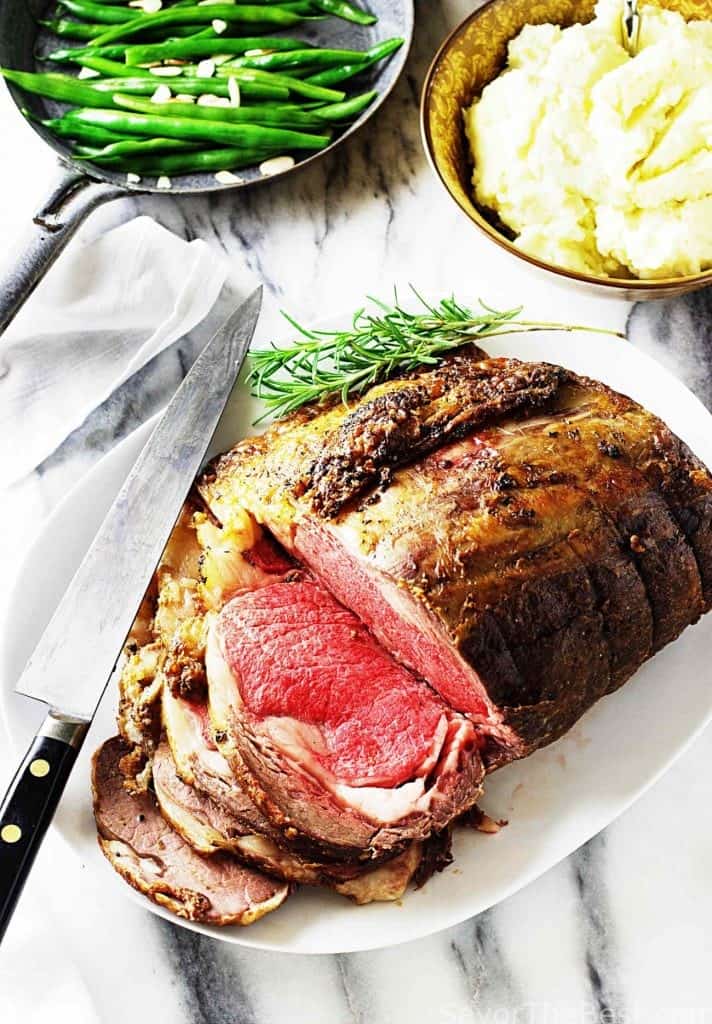
I used a meat-probe thermometer to monitor the temperature while it was cooking and removed the roast from the oven when the temperature probe registered 120°F. It was tented and after 25-minutes it had reached 135° and was ready to carve and serve.
Refer to our beef temperature chart to find your desired doneness level.
Beef Temperature Chart for Prime Rib
| Doneness level | Pull Temp | Temperature |
|---|---|---|
| Rare | 115-125°F | 120-130°F |
| Medium rare | 125-130°F | 130-135°F |
| Medium | 130-140°F | 135-145°F |
| Medium-well | 140-150°F | 145-155°F |
| Well-done | 155°F + | 155-160°F |
For the best results, use an instant-read meat thermometer and check the meat intermittently or use a leave-in meat thermometer so you don’t have to open the oven frequently. The above links are affiliate links from ThermoWorks . They make the best thermometers we have ever used and we highly recommend them.
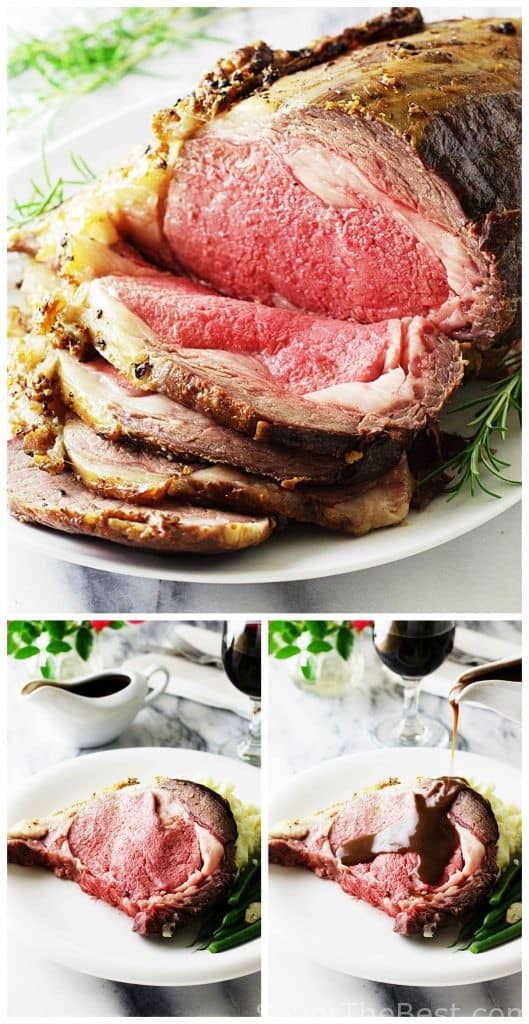
We all like our prime rib roast beef rare to medium-rare and when it was carved and served it was a nice rosy pink from the end slice to a nice rare at the center. There was very little drippings in the roasting pan, and I mean, very little! Just a couple tablespoons of melted fat and some crispy garlic-rosemary nubs.
No Drippings For Gravy? No Problem!
To make a gravy we used some beef broth, chicken broth and red wine plus flavor boosters of garlic and fresh rosemary. This concoction was reduced to two cups, then a paste of soft butter and flour was whisked in and it was cooked to a smooth sauce. The paste is a French technique known as Beurre Manié and is great for a last-minute thickener.
This classic roast beef was served with fluffy mashed potatoes, a beefy-wine sauce, green beans, fruit salad and an epic home-crafted Syrah red wine 🙂
For more special event dinner recipes:
- Wild Alaskan King Salmon with Blueberry Sauce
- Roasted Duck Legs with Orange Sauce and Wild Rice
- Sake-Red Miso Glazed Sablefish with Wasabi Emulsion
Pin this now to find it later!
Pin It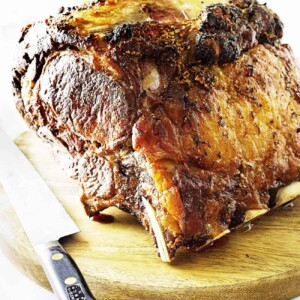
Prime Rib Roast
If you make this recipe, please leave a star rating and comment.
Ingredients
- 9 pounds prime rib roast, 4 bones
- Kosher salt
- 2 teaspoons vegetable oil
- ground black pepper
- 2 cloves garlic, finely chopped
- 2 tablespoons chopped fresh rosemary
For the Sauce: (Beurre Manié)
- 2 cups beef broth
- 2 cups chicken broth
- ½ cup red wine
- 1 garlic clove, grated or crushed
- 1 tablespoon chopped fresh rosemary
- 2 tablespoons butter, softened
- 2 tablespoons all-purpose flour
Instructions
- Using a sharp knife, cut slits, spaced 1 inch apart, in the surface layer of fat cap in crosshatch pattern, being careful to cut down to, but not into, the meat. Rub 2 tablespoons kosher salt over entire roast and into the slits. Transfer to a large plate, and refrigerate, uncovered, for at least 24 hours or up to 4 days.
- Take the roast out of the refrigerator and let it sit on the counter for an hour to raise the roast temperature. To help cook the roast evenly, tie the roast with kitchen twine parallel to the rib bones at least at each end or tie between each pair of ribs.
- Adjust oven rack to middle position and heat the oven to 200°F. Set a wire rack in a rimmed baking sheet. Heat oil in a 12-inch skillet until just smoking. Sear sides and top of the roast until browned, 6 to 8 minutes total. Let meat cool for 10 minutes. Transfer roast, fat side up, to a roast pan with a wire rack and season with pepper, garlic and rosemary. Insert thermometer-probe in the center of the roast without touching any bone. I roasted it until the meat registered 120°.
- Remove roast from oven but leave it on the baking sheet, do not remove the thermometer-probe, tent loosely with aluminum foil, and let rest for another 20-30 minutes. The heat carry-over will bring the meat to 135 for medium-rare and will be tender and juicy.
For the Sauce: (Beurre Manié)
- Add the beef broth, chicken broth and red wine to a saucepan and over medium-high heat bring it to a boil, decrease the heat to low and simmer until the mixture is reduced to 2 cups.
- In a small dish add the butter and flour and mash them together with the back of a tablespoon to make a paste. Remove the reduced broth mixture from the heat and add the paste, whisking together to melt the paste. Set the saucepan back on the heat and boil briefly, whisking continuously for another minute until thickened. Transfer to a serving pitcher and pass to guests.
Notes
- For easier carving have your butcher remove the bone section and then tie it back on with twine.
- I use avocado oil or coconut oil when cooking with high heat because they have high smoke points.
- We prefer our prime rib medium-rare at 135°F and you will need to adjust the cooking time according to your taste. For rare it will be 125°F; and 145°F for medium;
- The Beurre Manié can be made in advance and reserved
Approximate cooking times for a rare Prime Rib at 200°F
These are approximate times for a rare roast. Add additional time if you want your roast cooked medium to well done. Results will vary based on your oven and temperature fluctuations.- 4 lb. –2 hr. 30 min.
- 5 lb. — 3 hr. 10 min.
- 6 lb. — 3 hr. 50 min.
- 7 lb. — 4 hr. 30 min.
- 8 lb. — 5 hr. 10 min.
- 9 lb. — 6 hr. 30 min.
Nutrition
Nutrition information is automatically calculated, so should only be used as an approximation.
 Like this recipe? Rate & comment below!
Like this recipe? Rate & comment below!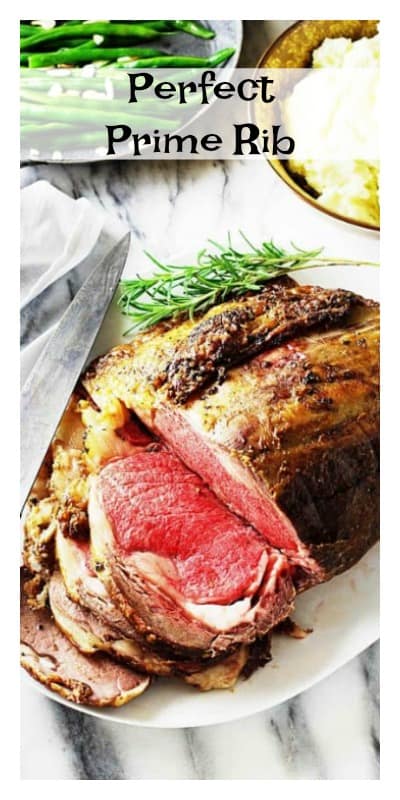
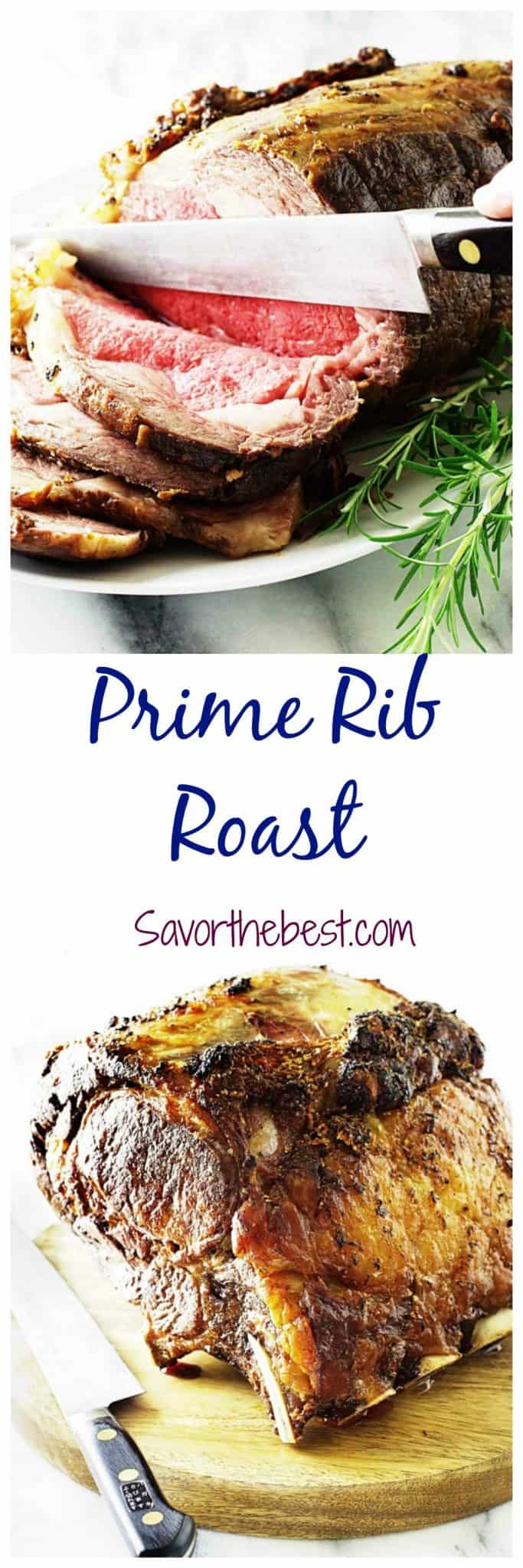

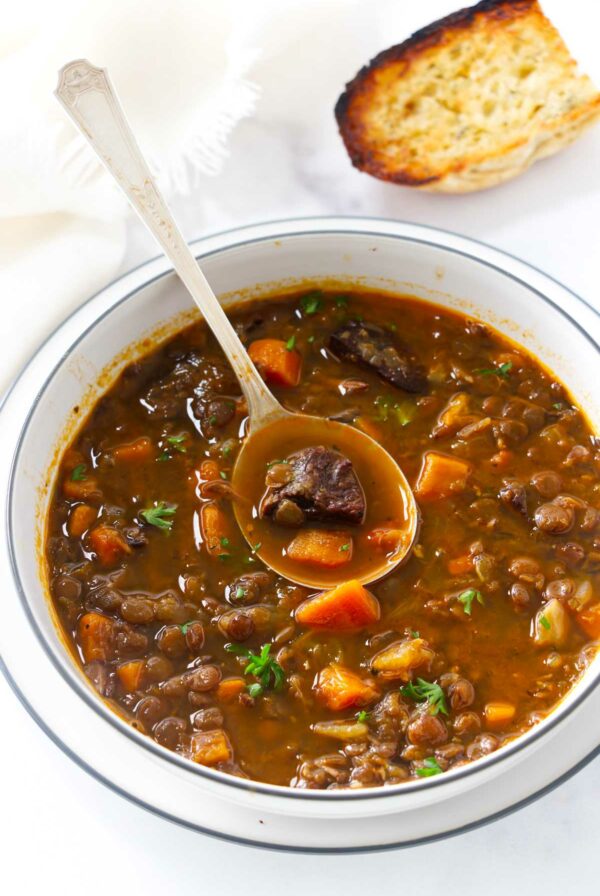
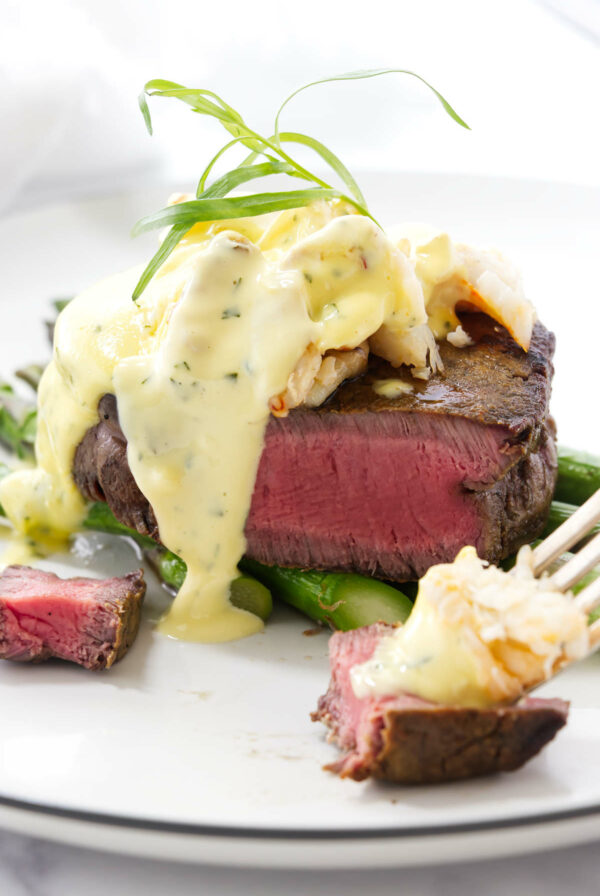
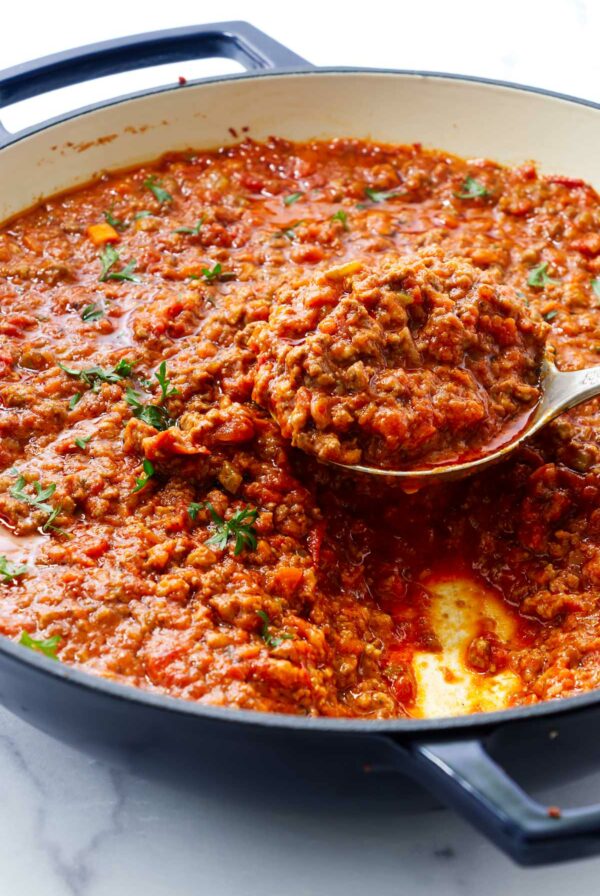
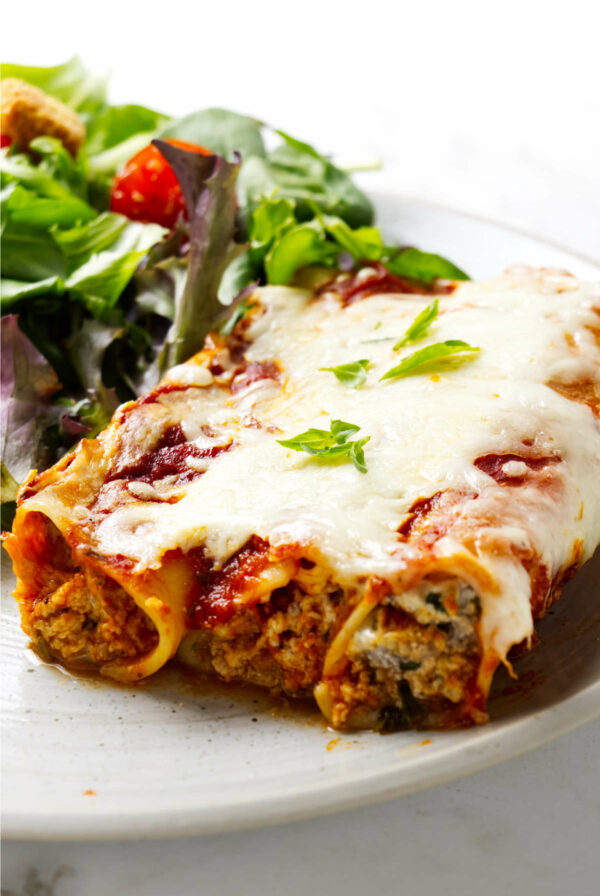










“I call this Magic Meat and make it almost every week. (In fact, I made it just last night). Here’s the trick: you must follow the recipe EXACTLY. Take the roast out of the fridge right before you turn on the oven. This means the roast is COLD when it goes in. (If you start with room-temp meat, it’ll be too done in the middle.) You roast at 500 for EXACTLY 5 minutes per pound. I ask Siri: “How much is 2.85 times 5?” Then I roast for 14.25 minutes, using a timer. Timer for the 2 hrs. oven off too!” NY Times Commenter
This is ALWAYS PERFECT. It’s crazy. Just make sure you put a note on the oven door so NO ONE opens the door! Enjoy!
Approximately how long does this size roast take to cook at this temperature, or how many minutes per pound would you suggest?
Anywhere from 12 to 15 minutes per pound depending on how well-done you want the meat. Use a thermometer and cook it to 120°F for rare, 130 to 135° for medium-rare, and 140 to 145°F for medium. It will take about 12 minutes per pound if you want rare meat and closer to 15 minutes per pound if you want it medium. Sometimes the cooking time can vary significantly though so make sure you trust the thermometer more than the cooking time.
@Dahn Boquist,
With respect to the cooking time, the recipe states a 10 lbs roast took 3.5 hours to cook to 120 degrees. Doesn’t your 12 to 15 minutes per pound estimate use a roasting temperature of much higher than the 200 degrees in the recipe?
Yes, you are correct Eric! Thank you for pointing that out. The time for this recipe is actually 30 to 40 minutes per pound since it is cooking at 200°F. I appreciate that observation, thank you.
I am cooking a whole prime rib!
Obviously I cannot dear it.
What would you suggest?
Love the dry brining!
Deborah, if the roast if too big to sear then just skip that step. If you cook the prime rib slow and at a low temp like this recipe, you will still have a juicy, tender prime rib. Have a wonderful Christmas dinner!!
Lovely pictures! You wouldn’t believe how much I would love this meal right now (and I just left the table :s)
Thank you so much, Simon! This prime rib roast would be great for your Christmas Dinner! 🙂
Wow, that roast looks cooked to perfection!
Thank you, Sabrina….this is the juiciest prime rib roast beef! Delicious 🙂